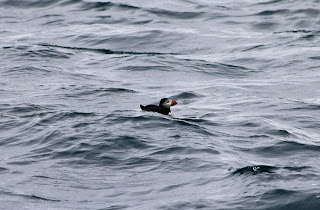 |
| collection of my property. Elderly Victorian woman |
Loose surface dust can be removed with a soft brush or with pressurized air, preferably with air blown from a compressed air can. No other cleaning method can be recommended safely. The unprotected surface of a daguerreotype is sensitive to the slightest touch; such a plate should therefore be handled with utmost care. All other cleaning operations are restricted to the non-image components of the package, i.e. case, window mat, cover glass, and gilt frame. Clean the glass and frame with a cotton swab and a mild soap solution, then rinse and dry them with a warm-air dryer (a hair dryer). Cardboard window mats should not be cleaned in a soap solution, but, rather, with a brush.
Damage or deterioration in ambrotypes is often in the form of partial or complete loss of the black backing. If the image layer facing the viewer is still intact, which is to be expected in most cases, the black backing can be replaced. To do this, separate the image-bearing glass plate from the case assembly by gently bending open the gilt frame and removing the cover glass and then the window mat. Carefully avoiding scratching or otherwise damaging the image layer while it is being separated from the case assembly, place a piece of black felt cut to the exact size tightly against the back of the ambrotype plate. Replace the cover glass if the old one is broken. Reassemble the package in the order.
The term "case photograph" describes three types of 19th-century photographs that were generally kept in cases which were both decorative and protective. They are the daguerreotype, named after its inventor L.J.M. Daguerre; the ambrotype; and the tintype or ferrotype. Daguerreotypes were introduced in 1839 in Paris, France, constituting for some photo-historians the beginning of photography. Ambrotypes and tintypes, made by the wet collodion process, originated in the 1850s. Daguerreotypes continued to be made into the 1860s. Ambrotypes were made for a little while longer. Tintypes survived into the 20th century in modified form as a type of instant portrait photograph.
The mention in one breath of these three types of case photographs does not suggest that they have similar properties. Whereas a daguerreotype is made by a unique photographic process that differs from any other silver halide process, ambrotypes and tintypes are made by the wet collodion process, which was the principal negative process in the second half of
The support material of daguerreotypes is a silverplated copper sheet. The image consists of microscopic particles of silver amalgam (an alloy of mercury and silver) located on the silver surface. Owing to the presence of a metallic silver layer in a daguerreotype, it has been called a "mirror with a memory" with a "jewel-like appearance." This property helps to identify it. A daguerreotype is, photographically speaking, a negative. This can be observed if the careful viewer turns the daguerreotype in the horizontal plane to change the angle of light striking its surface.
Ambrotypes and tintypes, on the other hand, have definite layer structures: a collodion layer on a sheet of either glass (ambrotype) or iron (tintype). These two types of photographs are often referred to as collodion positives. Wet collodion is a solution of cellulose nitrate
Ambrotypes are negative images. They are always on a glass support that has a black backing of either paint or, more rarely, dark cloth or felt. This makes the image appear to the viewer as a positive. A black backing of paint can be found either under the collodion layer or on the non-image side of the glass plate. When, in the absence of a black backing, the glass itself is dark-coloured, the resulting picture is called an amphitype. The tintype support, which is coated with a black lacquer, is made of iron and, therefore, will be attracted by a magnet. This can be used to identify the support. Ambrotypes and tintypes are low-contrast pictures. With a little practice, they can be easily distinguished from daguerreotypes. Daguerreotypes and collodion positives are sometimes hand-coloured, especially to create flesh tones and to emphasize.
old trip ... scotland ;)







































